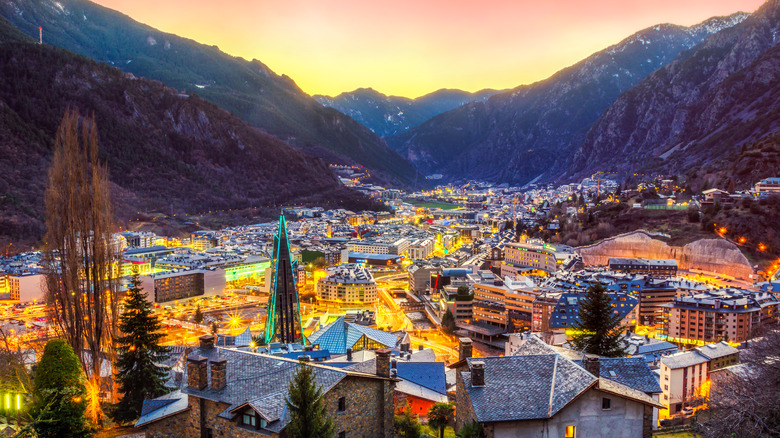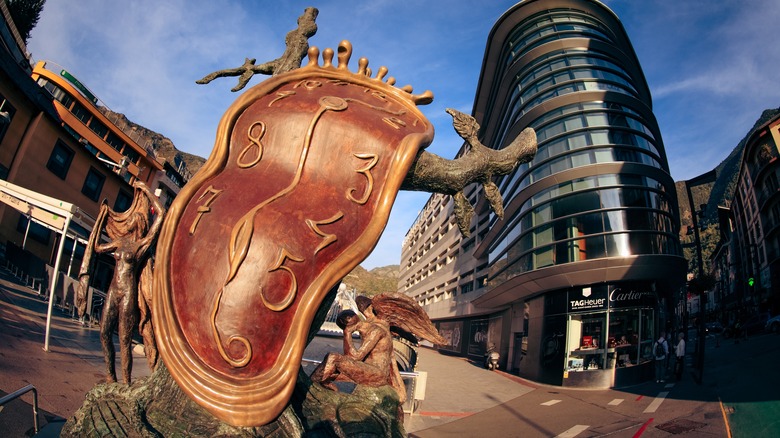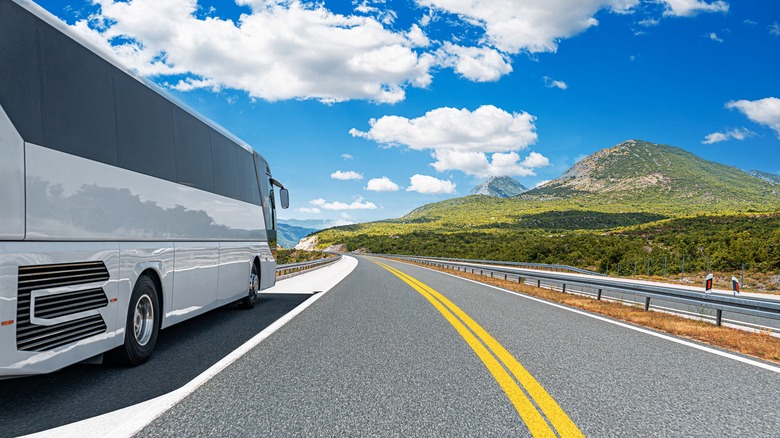Europe's Highest Capital City Is A Road-Trip-Only Adventure Tucked Away In The Mountains
What is it about Europe that is so alluring? While the continent's charm certainly can't be pinned down to one factor, its narrow alleys, cobblestone streets, beautiful architecture, deep cuisine, and amazing wine tasting all combine into one intoxicating adventure. This undeniable magic exerts its pull on visitors, guaranteeing Europe's position as the top overseas draw for American tourists. While the big countries attract the lion's share of visitors, Europe is also home to a handful of often-overlooked microstates that are intriguing destinations in their own right.
Sure, people visiting Rome may take a day to check out Vatican City, but what about places such as Monaco, Malta, San Marino, and Liechtenstein? While all of these tiny nations can be visited as stop-offs on a great European rail trip, there's one — the principality of Andorra — that can only be accessed by road.
Its capital, Andorra la Vella, sits perched high in the Pyrenees mountains, smack dab between France and Spain. At 3,356 feet above sea level, Andorra la Vella is the highest capital city in Europe, and its historic core oozes old-world charm. This — along with the outdoor splendor offered by the slopes and peaks surrounding it — makes it the perfect spot for those seeking a more laid-back European experience without the crowds.
An untouched Pyrenean gem
Nestled in a valley and home to just over 22,000 people, Andorra la Vella isn't a big place, but its diminutive size surely adds to its charm, making it feel like more of a classic European mountain town than a national capital. People come to Andorra la Vella to wander its historic center, get down with some hearty mountain fare, and — from December to April — hit the slopes. Just a 30-minute drive from town is Grandvalira Resorts Andorra, a combination of three ski resorts boasting more than 186 miles of runs perfect for both beginners and experts. Once the snow melts, the surrounding mountains turn into a hiker's paradise, with paths winding through a variety of landscapes, including forests, ridges, and alpine lakes.
When in town, La Casa de la Vall is a must-see for aficionados of history, architecture, and local flavor. Constructed in the late 16th century as a manor house, it served as the seat for the Andorran Parliament — one of Europe's oldest — from 1702 to 2011. This striking, rectangular stone building is representative of the kind of architecture found throughout the Pyrenees. The interior is a treasure trove of murals, furniture, and Andorran heritage. Most impressive is the Tribunal de Corts, a criminal courtroom constructed entirely out of carved wood found on the first floor. It's open from 10:00 a.m. to 6 p.m. with a one-hour break from 2:00 to 3:00 daily, closed on Sunday afternoons and Mondays. Admission is €5, and guided tours are available.
Other notable attractions in Andorra la Vella include Pont de Paris, an iconic bridge spanning the Valira River that mixes modern and classical elements; the historic St. Esteve de Andorra Church; as well as "La Noblesse du temps," a sculpture by Salvador Dalí situated in the Plaza del Rotundo.
How to get there
One of the things that makes Andorra la Vella so unique is the fact that you can't get there via airplane or train. Due to its compact size and rugged topography, the country of Andorra lacks either an airport or rail line, though both can be found close by. The Andorra – L'Hospitalet train station lies just over the border with France and can be reached in about 45 minutes by bus or taxi, while you can fly into Andorra-La d'Urgell airport on the Spanish side (but only from Madrid, Barcelona, Palma de Mallorca, or Budapest), and take a free one-hour bus into town.
There are two big European cities within striking distance of Andorra la Vella by bus, which is a common way to access the Andorran capital: Barcelona, Spain's Catalonian capital, is a three hour and 20 minute ride away, while Toulouse — France's fourth-largest burg that's also nicknamed "The Pink City — takes three hours and 45 minutes. Both also make perfect hubs to fly into.
Andorra la Vella is great all times of the year. Winter is cold but not freezing, though the surrounding slopes see plenty of snow, while May to mid-July offers summertime bliss, with warm temperatures and rhododendrons in full bloom, along with ripe fruit and mushrooms. And while many people come to Andorra la Vella for the combination of nature and culture, it's also a hotspot for duty-free shopping, so bring your credit card. For more mountainous European charm where three countries meet, check out this underrated French lake town.


